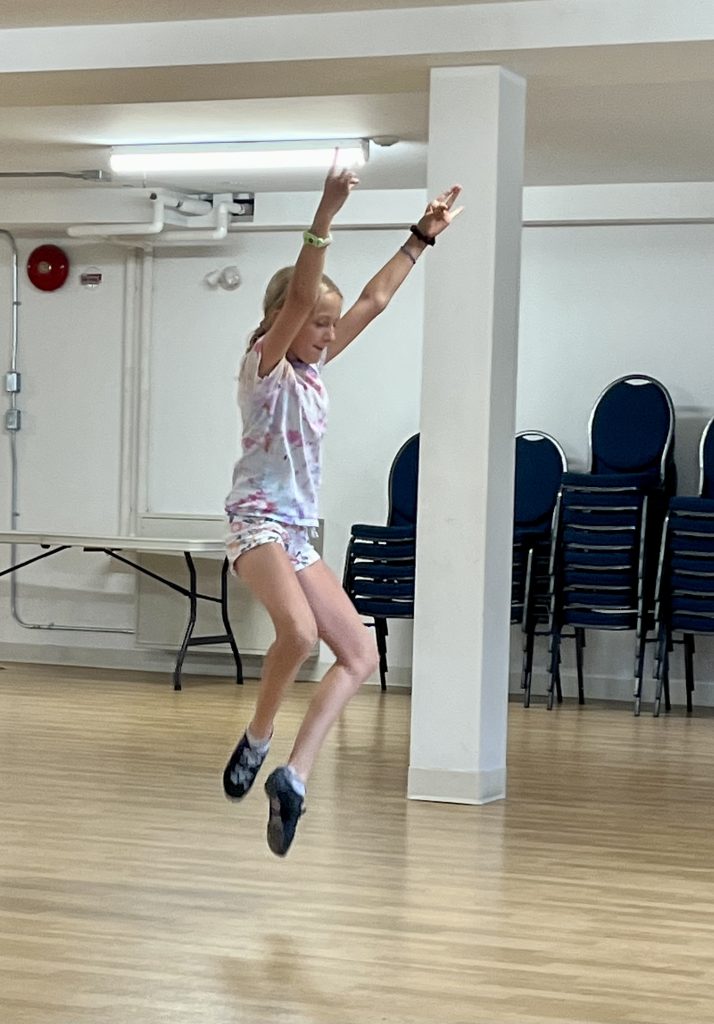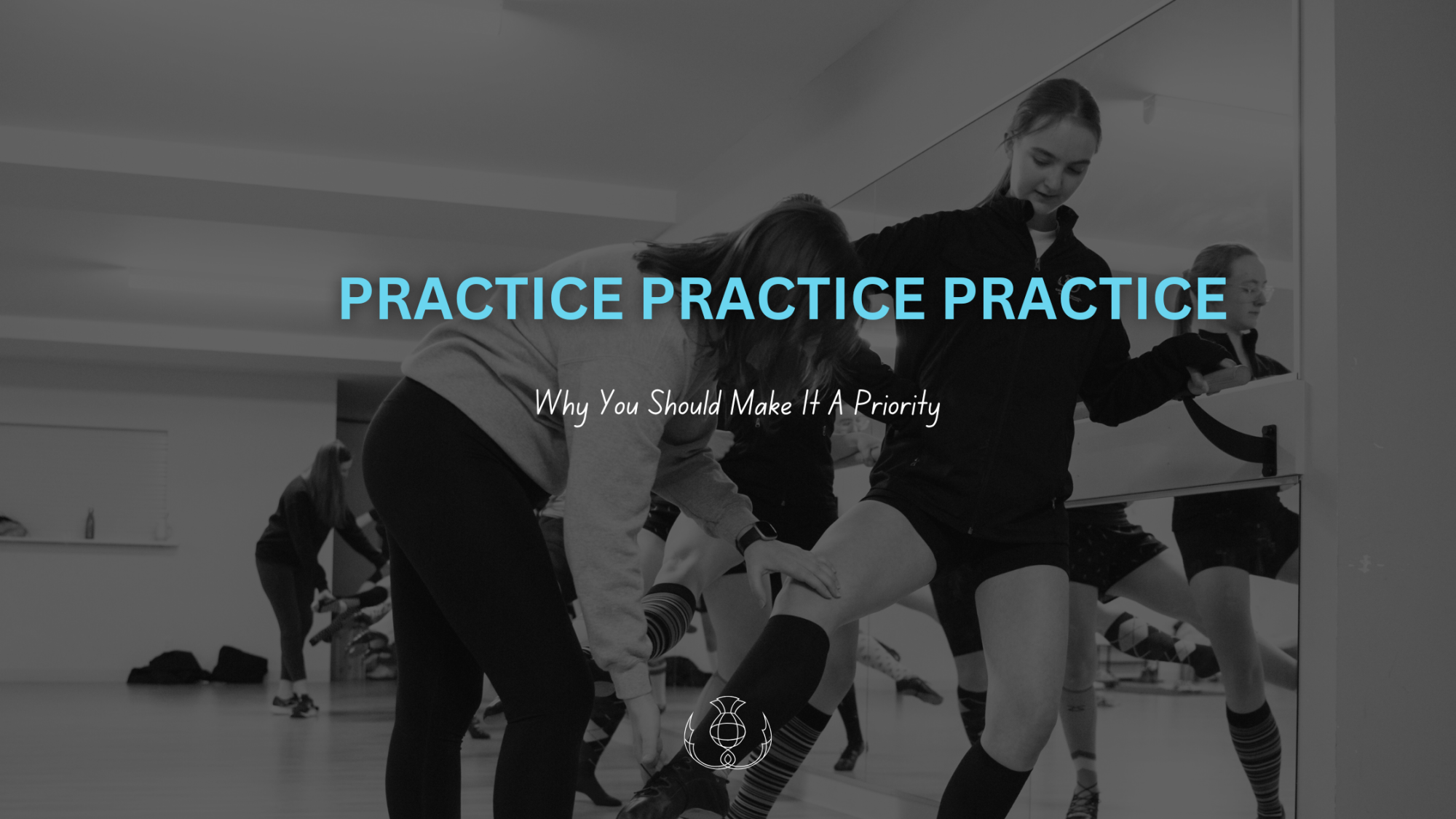All dance teachers would probably agree that practice is important. Seems obvious, right? Yet, it might feel daunting, especially for dancers juggling classes and other commitments. So why do we emphasize practice so much, and how can dancers effectively incorporate it into their routines?
While attending class, even twice a week ,is beneficial, it’s often not enough to achieve the progress most dancers aspire to once they start competing. Establishing a consistent, positive, and effective practice regimen at home is crucial to complementing what you’re learning in class.


Why isn’t class enough?
Instructors have two main goals in class. First, they teach the dances and movements. Once that’s covered, the next priority is to provide corrections and ensure dancers understand how to implement them. This involves applying the technique in class, making sure the dancers can demonstrate it correctly, and receiving feedback upon making adjustments. However, mastering these corrections often requires numerous repetitions—many, many, many (did we say many?) repetitions. There simply isn’t enough time in class for it all. Additionally, corrections are typically individualized, so practicing them repeatedly in class might benefit one dancer significantly but not others. The most effective way for all dancers to improve is to attend class to learn and gain knowledge, and then practice at home to return to class ready for more!
Let’s break this down. What are the roles and who should be involved?
For younger dancers, three people (or groups of people) are involved: the dancer, the teacher, and the parent. This is the triangle of support for great dance development. Each person in the triangle has specific responsibilities, and successful practice depends on all three doing their part. This is so important we’re going to do a 3 part series just on the triangle of support!

- Teacher: The dance teacher initiates the practice journey. Their job is to observe the dancer in class and provide specific, achievable feedback. In each class, dancers should receive a few corrections from the instructor. Sometimes these are general tips for the whole class, and other times they are specific to an individual. The teacher also helps dancers understand how to make corrections by demonstrating exercises and providing tips. After a practice session, the instructor should see progress and offer further feedback.
- Parent: The parent’s role can be tricky, especially if they’ve never danced and don’t know how to improve technique. However, its pretty straightforward if you follow these guidelines. Primarily, the parent’s job is logistical: creating a practice space, scheduling practice times, reminding the dancer when it’s time to practice, and being available to watch movements and provide support. The dancer can demonstrate what ‘right’ and ‘wrong’ look like, and the parent can help watch for these. Alternatively, parents can create the right environment and allow the dancer to practice independently. This may take some trial and error, but you’ll figure out what works best for the family. It’s important to remember that parents don’t need to know much about Highland Dance to be a strong part of the support triangle.
- Dancer: Naturally, the dancer has the most work to do—it is their dancing that needs improvement, after all! The dancer’s crucial tasks include remembering and noting down the corrections received in class. Feedback is of no use if forgotten immediately. The dancer must take responsibility for their improvement by listening carefully and remembering what to practice. During home practice, dancers should focus on actually fixing the corrections rather than just running through their dances. This lead us to the question we get asked the most…
What should practice look like?
This depends on your goals:
I want to improve endurance: Gradually increase the demands on your body to avoid injury. Focus on increasing the duration or intensity of your practice. This could mean adding extra steps to a dance, doing back-to-back dances, or using weights during barre work. Always increase intensity slowly to build strength safely.
I want to memorize a new dance: Practice by repeating the dance multiple times. Start by doing each step slowly, then at full speed and finally put it all together to the music. If you make a mistake, go back to that step and repeat the process.

I want to improve a specific part of my technique: Follow the exercises your dance teacher has shown you. Decide on a reasonable number of repetitions based on your age and available time. This work should be slow and deliberate, ensuring you fix the correction each time. Use a mirror, ask a family member for feedback, or self-assess to ensure you achieve the desired result. After completing your repetitions, try the movement in a step and see if it has improved. If not, you may need more repetitions or more practice over several days.
How long should practice be?
The duration of practice depends on various factors, including age and competitive level. Here are some general guidelines based on these factors:

Remember, consistency is key. Regular, focused practice sessions are more effective than occasional, lengthy ones. By incorporating these strategies into your practice routine, you’ll see steady progress and reach your dancing goals!
